Card Wall
as a process model
We use card walls to develop the ideas that become our projects, features, and stories. Cards provide a way of abstracting independent ideas, drawing relationships and dependencies between features, and are for communicating the components of a value stream.
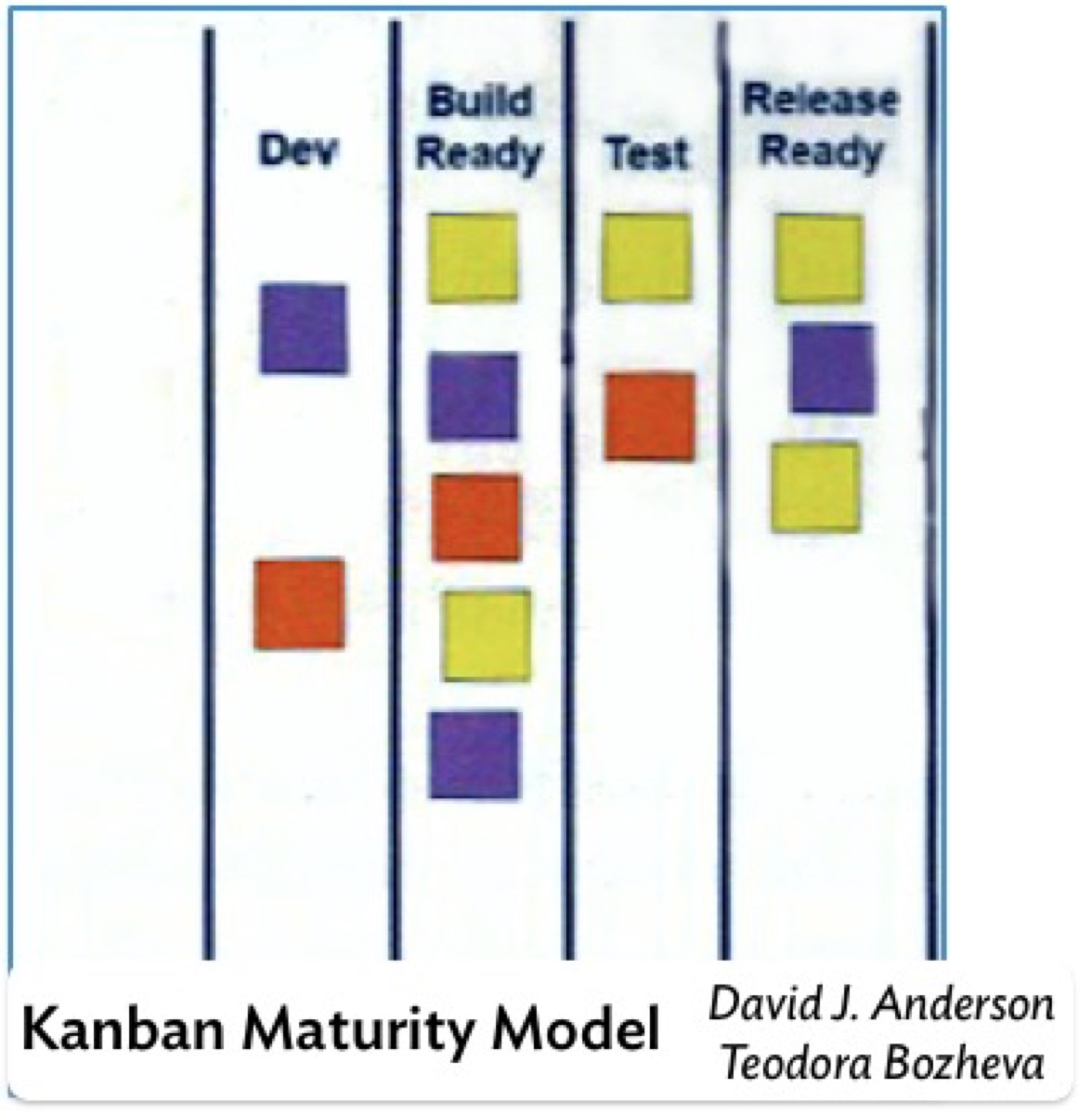
Here’s a basic card call that might be used in any ad-hoc process. It communicates some basic information about where work is, and what’s done.
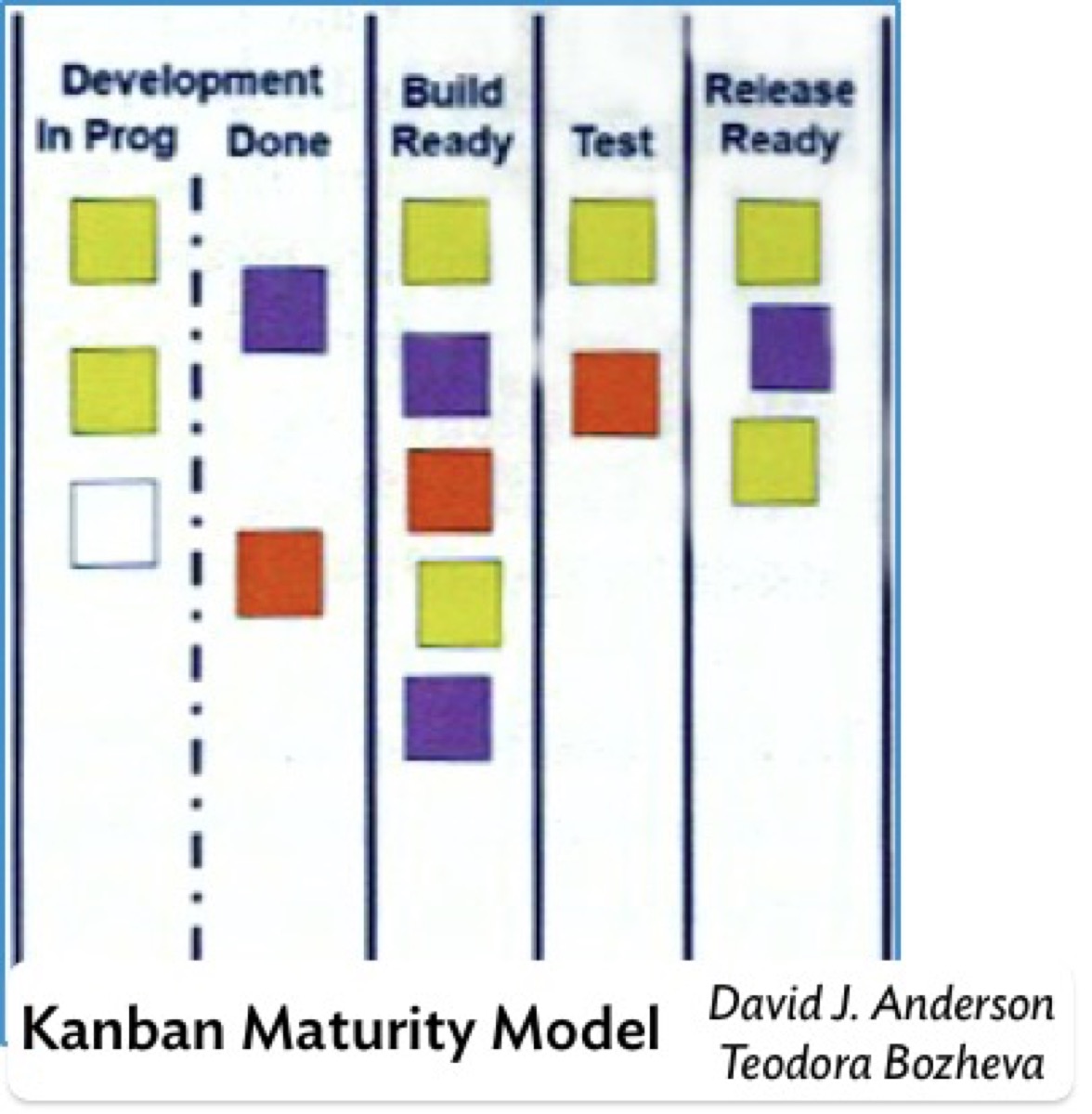
Here we’ve just added a Done status to the Development column. It doesn’t look like much, but it’s an important detail, about whether you’re modeling a push or pull system. In a push system, when you’re done with dev, then you move the card to the “Build Ready” column
You could think of the column headers as a taxonomy of workflow status, with rules about what transitions are permissible.
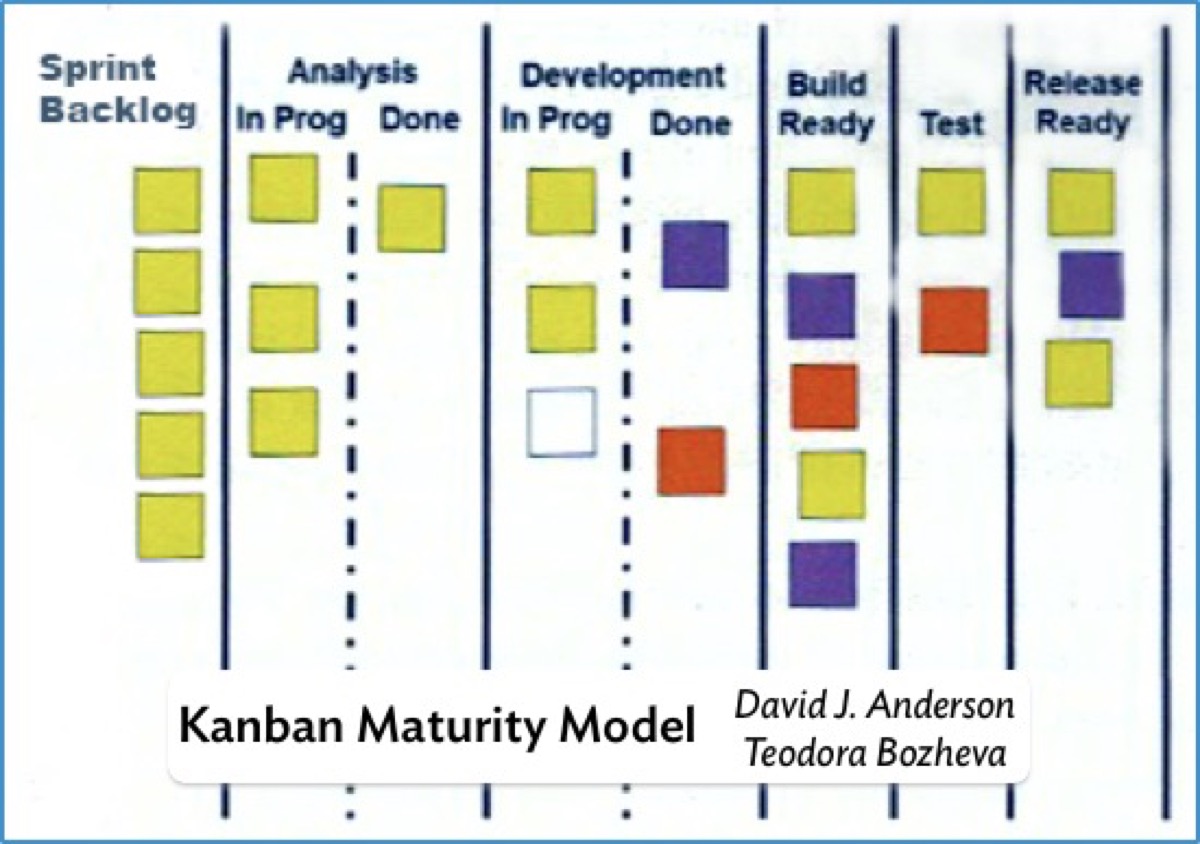
To model Scrum as a workflow management process, we need to represent the Sprint Backlog. We’ve also added an Analysis column, to communicate a bit more about the reality of the underlying process.
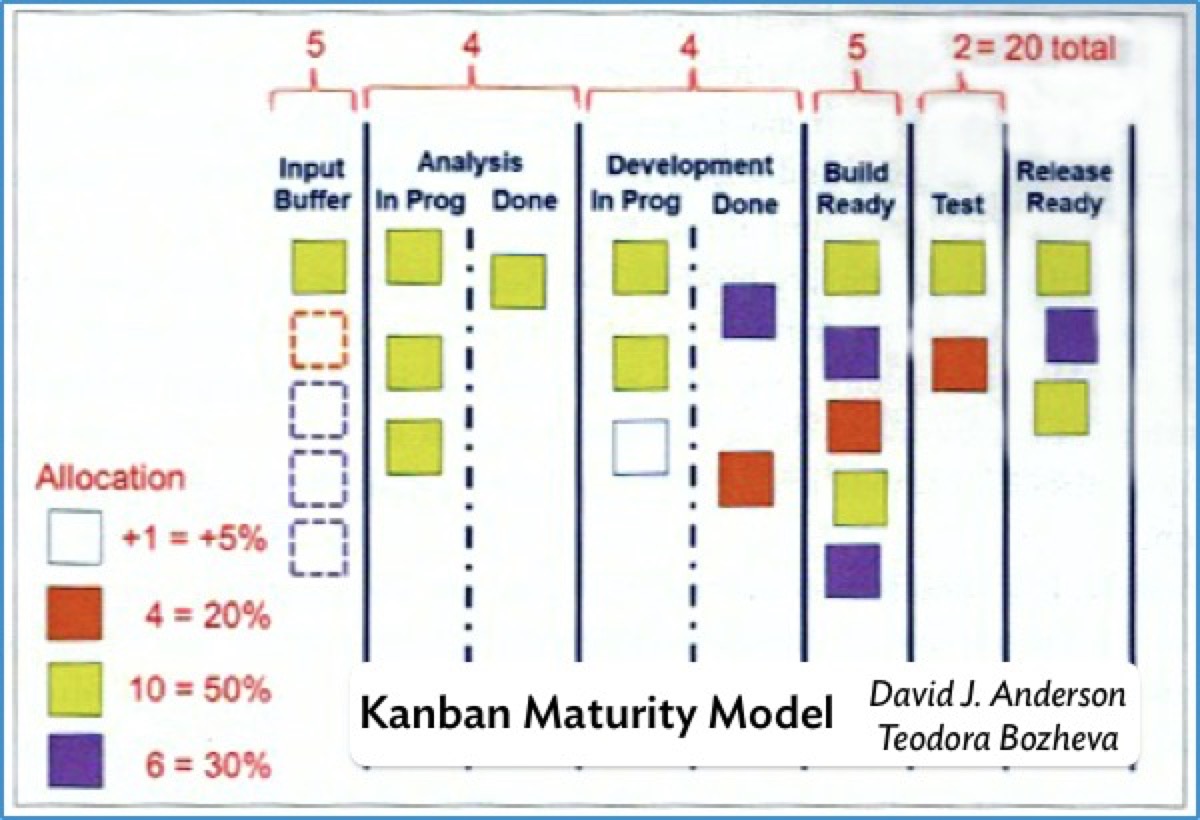
In Kanban, we don’t have a Sprint Backlog; instead, we have an Input Buffer. The Sprint Backlog gets reset at the end of each sprint and replenished at the beginning of the next. The Kanban Input buffer is replenished whenever it runs low. Both Kanban and Scrum pull from a Product Backlog.
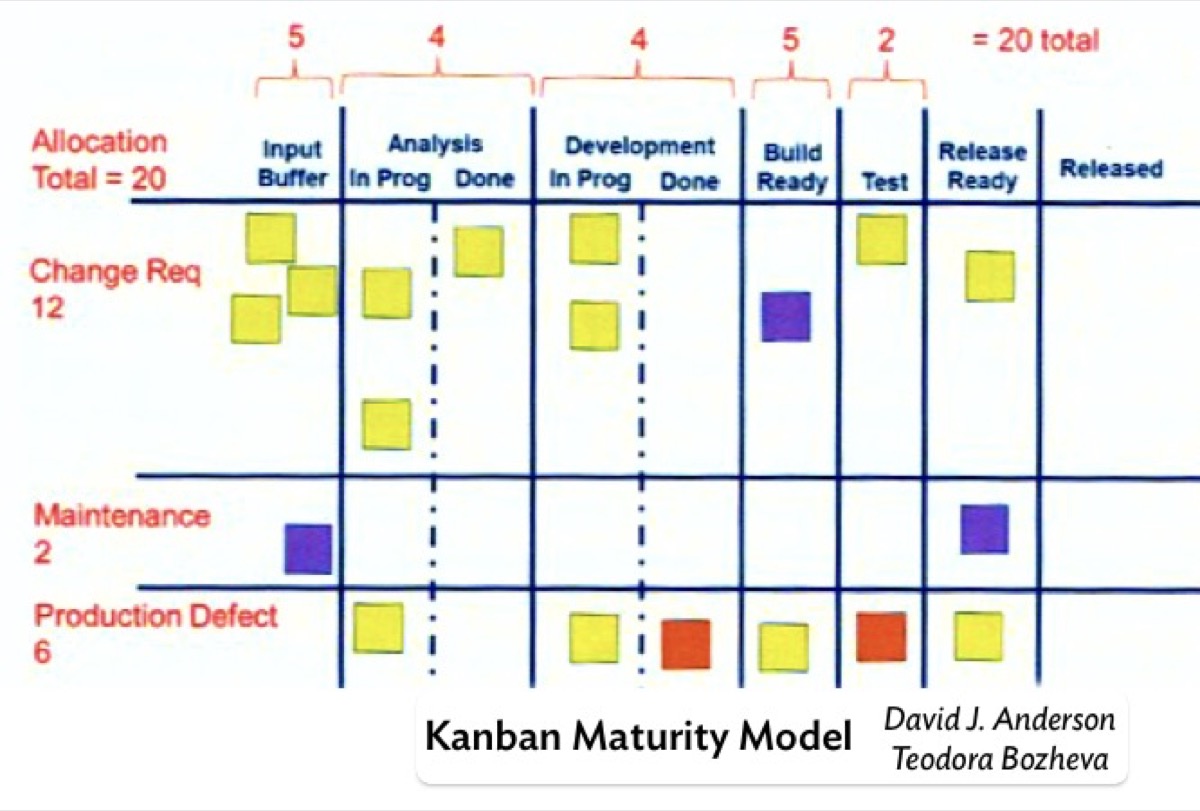
Here we’ve added Swimlanes to model different Types of Work. You can think of Types of Work as another taxonomy, giving you a way to differentiate the attributes that distinguish one type of work from another. For example, the test protocol for a production defect might be different from Change Requests.
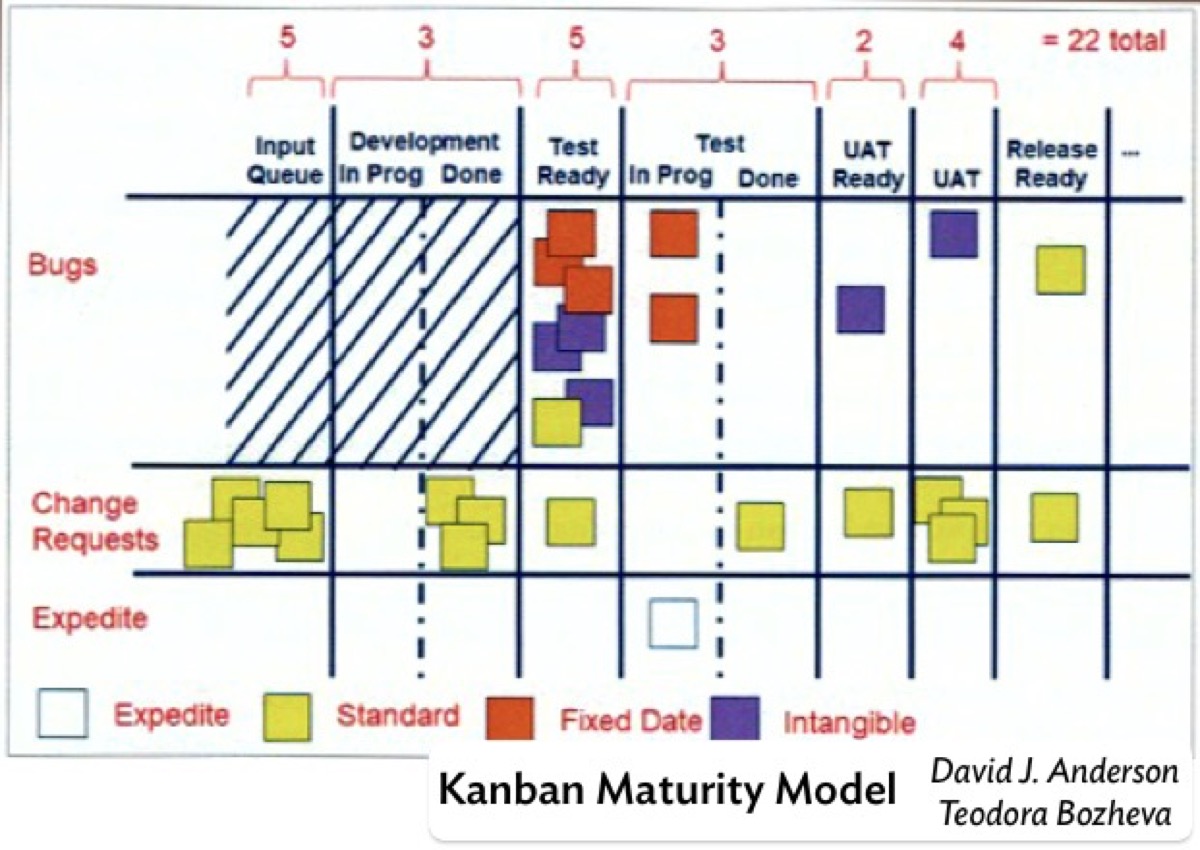
Here we’ve added another taxonomy for Class of Service. The classes of service shown here are from the Kanban Maturity Model book. Standard is, of course, your baseline class of service. Fixed Date work is work that has to been done by a given date, not just a regular project deadline, but something like an election, sporting event or regulatory compliance deadline. Fixed data work starts out behaving like standard work, but the behaviors change as we approach the drop-dead date. Intangible work is a task that has a value, but there is no cost imposed if it is not done right away.
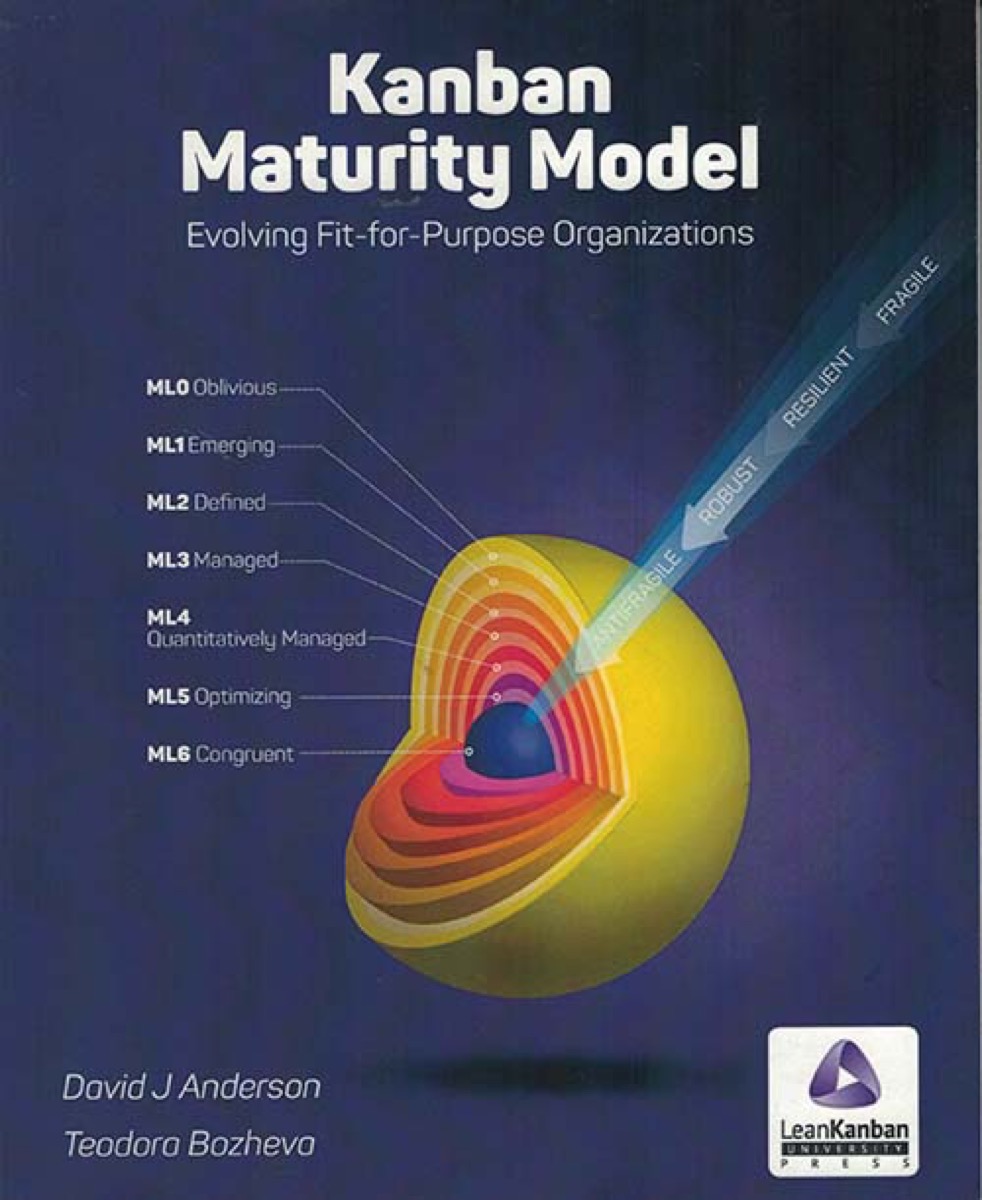
Modeling Expedited work communicates now only what’s going on, but if making the status self-evident avoids unnecessary emails and messaging, that will help keep the focus on the work.
These examples are drawn from, Kanban Maturity Model ISBN-978-0985305154, by David Anderson and Theodora Bezheva.

Let's agree to define productivity in terms of throughput. We can debate the meaning of productivity in terms of additional measurements of the business value of delivered work, but as Eliyahu Goldratt pointed out in his critique of the Balanced Scorecard, there is a virtue in simplicity. Throughput doesn’t answer all our questions about business value, but it is a sufficient metric for the context of evaluating the relationship of practices with productivity.